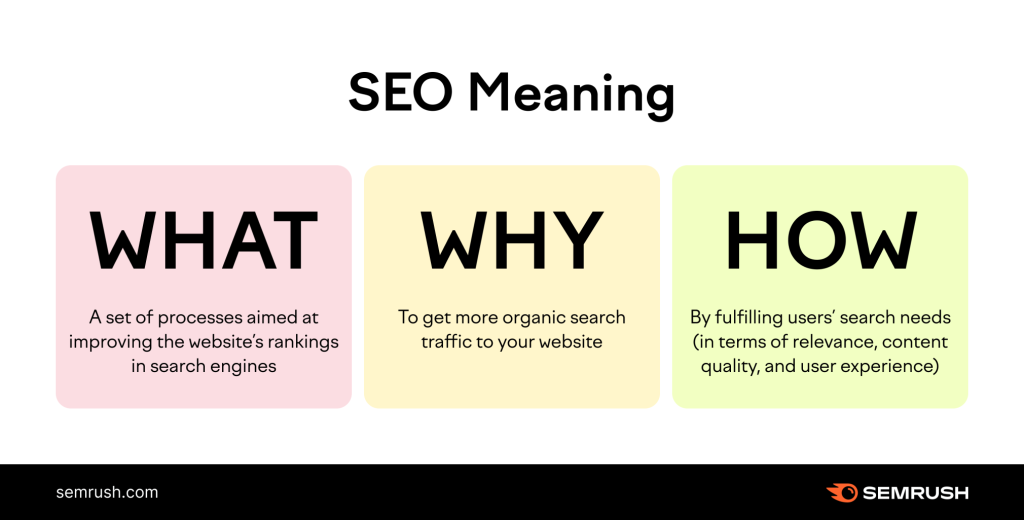What are the Effective CSS Rules for SEO?
When it comes to creating a website that ranks well in search engines, there are several factors that are taken into consideration. From crafting engaging content to building a mobile-responsive site, there are many elements to focus on. One factor, however, that often goes overlooked is your website’s CSS code.
But what are the Effective CSS Rules for SEO? Below we will explore this more.
CSS code refers to the code used to style your website, and it plays a major role in your site’s SEO. When executed properly, CSS code can help improve your website’s rankings in search engine results pages (SERPs), allowing you to attract more traffic and increase your online visibility. But just how can you ensure that your CSS code is SEO-friendly?
What are the effective CSS rules for SEO?

1. Optimize Images
One of the most important CSS rules for SEO is optimizing your website’s images. Images that are too large can slow down your website’s loading time, which can negatively impact your SEO rankings. By optimizing your images, you can improve your website’s speed and help boost its rankings in SERPs. Further examples of what are the effective CSS rules for SEO? It is for Optimizing CSS SEO code for clean and efficient design.
To optimize your images, you can use CSS rules like “background-size: cover” to ensure that your images fit properly on a page without taking up too much space. You can also use CSS to reduce the size of your images without compromising their quality.
2. Avoid Duplicate Content
Duplicate content is a major factor that can negatively impact your SEO rankings. If your website’s content is too similar to that of another site, search engines may view it as spammy or unhelpful. To avoid duplicate content issues, you can use CSS to create unique page layouts and designs that differentiate your website from others.
One effective CSS rule for creating unique page layouts is “float: left”. This rule allows you to arrange your website’s content in a visually appealing way while also preventing duplicate content issues.
3. Use Responsive Design
Another CSS rule that can have a major impact on your website’s SEO is responsive design. Responsive design refers to the practice of creating websites that adjust automatically to fit different screen sizes and resolutions.
Today, more people than ever are accessing the internet from mobile devices like smartphones and tablets. By using CSS to create a responsive design for your website, you can ensure that it looks great on all devices, which can help improve your SEO rankings.
4. Minimize Code
The amount of code on your website can also impact your SEO rankings. Too much code can slow down your site’s loading time, which can affect your rankings in search results.
To minimize the amount of code on your website, you can use CSS to create streamlined, efficient designs. You can also use CSS minification tools to compress your CSS code and reduce its size.
5. Use Semantic HTML
Using semantic HTML is an important way to make your website more SEO-friendly. Semantic HTML refers to the use of HTML elements that have clear, meaningful names and attributes.
By using semantic HTML in combination with CSS, you can create well-organized, easy-to-navigate websites that search engines can quickly and easily understand. This can help improve your website’s rankings in SERPs and ultimately drive more traffic to your site.
6. Prioritize User Experience
User experience (UX) is a key factor in SEO because it reflects how users interact with your site. The more positive the user experience, the more likely they are to stay on your site, interact with its content, and convert to a customer. What are the effective CSS rules for SEO? CSS plays an important role in creating a positive user experience, such as using CSS to make your website easier to navigate and more visually appealing.
One effective CSS rule for UX is “font-size: 1em”. This rule sets the font size to one unit equivalent to the parent element, making it easier for users to read your content. Additionally, using CSS to add hover effects, gradients, and colors can help make your website more visually engaging and keep users on your site for longer.
7. Use Meta Tags
Meta tags are pieces of information that provide information about your website to search engines. By using CSS to include relevant meta tags on each page of your website, you can help search engines understand the relevance of your pages, which can improve your visibility in search results.
One effective CSS rule for meta tags is “font-size: 0”. This rule allows you to embed meta tags within your HTML code without affecting the design or layout of your website.
8. Optimize Text Content
Optimizing your website’s text content is another important factor in SEO code, and CSS can help make your text content more accessible and user-friendly. By using CSS to ensure that your content is easy to read, you can improve engagement and decrease bounce rates.
One effective CSS rule for text content is “line-height: 1.5”. This rule ensures that the space between lines of text is optimal, making it easier to read and improving the overall readability of your website.
9. Improve Site Speed
Site speed is an important factor in SEO code because search engines prioritize fast-loading sites in their search results. By using CSS to optimize your website’s design and layout, you can help improve its loading speed, making it more attractive to both users and search engines. Search engines consider page speed as a ranking factor, so optimizing your CSS code can indirectly improve your SEO.
One effective CSS rule for site speed is “background-attachment: fixed”. This rule sets the background image as fixed rather than scrolling, which can help reduce the site’s size and improve its loading speed.
10. Avoid Inline Styles
Finally, avoiding inline styles is a key CSS rule for SEO code. Inline styles refer to CSS rules that are included within the HTML code, which can make it harder for search engines to parse and understand your site’s content. By using external stylesheets instead, you can make your CSS code cleaner, more efficient, and more easily understood by search engines.
Conclusion
So, what are the effective CSS rules for SEO? Optimizing your website’s CSS is an effective way to improve its SEO code performance. You can improve its chances of ranking well in search engine results pages. Whether you’re a small business owner or a seasoned SEO expert, these CSS rules are a valuable tool in your SEO toolbox.
WriterArmy offers premium SEO services at cost-effective prices to help businesses improve their online presence. Feel free to contact us for a free audit when asking yourself, what are the effective CSS rules for SEO? We would love to hear from you!








